So You Think You've Found A Meteorite?
As a rule of thumb if you didn't see it fall or pick it out of a fresh crater then you should approach this being a bit skeptical. That said here are a few things to look for:
A) Does the rock have a fresh glossy surface like it has been melted? This would be called fusion crust and would only penetrate to a maximum of 5 millimeters. The image on the left shows what fresh black crust looks like, the image on the right reveals the interior which as can be seen has not been affected by the heat of re-entry except along the very top edge. There you can see the thin black line which indicates how deep (~1mm in this example) the melting occurred during its flight through our atmosphere. Also, if you examine an enlarged image of the interior you would be able to see small features that are "roundish" in nature... these are the chondrules. The image on the right is a Camel Donga eucrite with nice fresh looking crust.
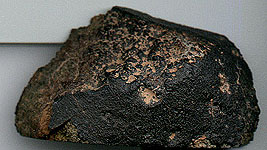
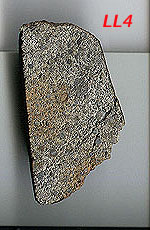
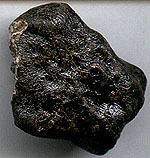
B) Are there regmaglypts (thumb prints) on the surface? Or does it have an oriented (pointy or cone) shape to it?
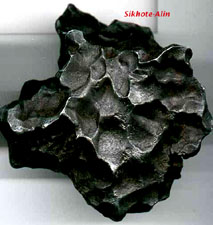
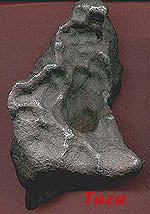
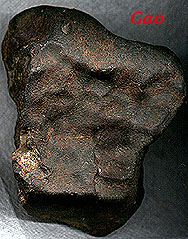
C) Does it feel heavier than what you might expect for a rock that size?
D) In the area where it was found did it stand out as looking different than any other rocks that are present?
E) Is the specimen attracted to a magnet? If you don't have a strong magnet (or if the meteorite is only weakly attracted to a magnet) it may be best to crush up a small sample and then check for small magnetic grains. While most meteorites have enough metal in them there are those where the Fe-Ni is so weathered that it will not respond to a magnet. Also, it is very important to note that some meteorites such as the achondrites don't have any metal at all.
F) Can you see into the interior at all? If yes can you see any chondrules or metal? As can be seen in the fractured surface of this specimen the round chondrules can often be very easy to see. The highlighted chondrules below range in size from .5mm to 2mm and are only a few of those visible in the surface. This is an LL4 stone amphoterite North West Africa #531.
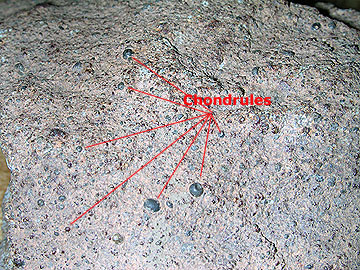
G) Meteorites with high iron content will get a rusty appearance when weathered over time. The exact degree of weathering a meteorite undergoes is determined by the climate in the area where its landed. A meteorite that falls in the oceans or the moist forested areas will of course be unrecoverable after a very short time as it will be buried and attacked by all the moisture. On the other hand meteorites that fall in deserts (either hot or cold) will tend to last for quite some time without too many il effects from the environment. This is why so many new finds are coming from the desert regions of Africa and Antarctica (yes... this is considered to be desert too). The specimen below is from the Vaca Muerta find from the high (and cold!) Atacama desert of Chile. The high iron content lead to the bright rusty surface on the piece as it has been weathering for many thousands of years.
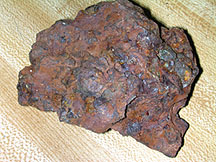
H) If you answered yes to most of the questions above then it may be a good idea to have a nickel (Ni) test performed. This involves the use of some nasty chemicals so is best done by someone trained to work with acids and what not.
I) If it tests positive for nickel (Ni) then a specimen should be sent to a research facility to make an official determination. Be sure to be prepared to send in either 10 grams or 10% of the find, which ever is less. They will keep this as the official sample and as a form of payment for the service rendered.
Home
What's New What
is a Meteorite? Meteorites
for Sale (Text Only) Purchase
Info
Micromounts Planetbrey
Collection Think
You've Found a Meteorite? Cool
Links
Email Planetbrey
If you have problems viewing this site, please email webmaster@planetbrey.com.
All
product prices, specifications, and availability are subject to change
without prior notice.
Not responsible for typographical errors.